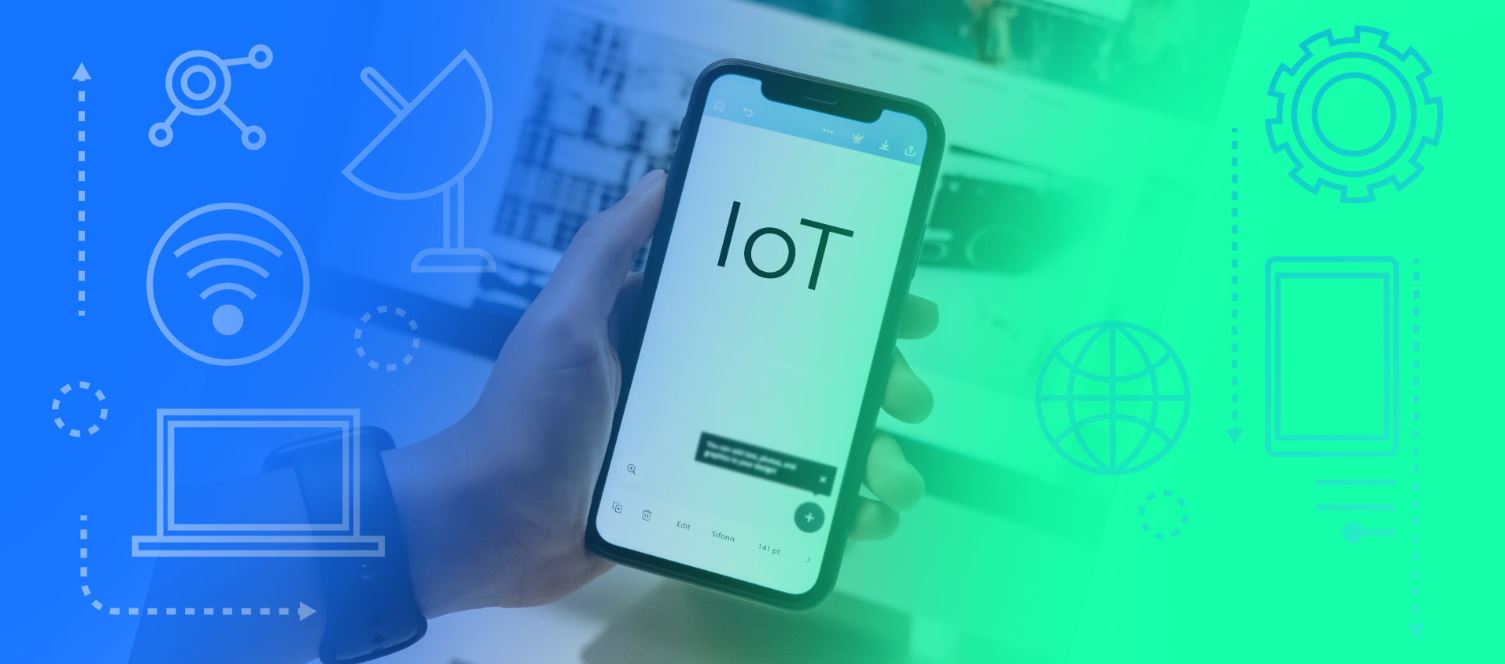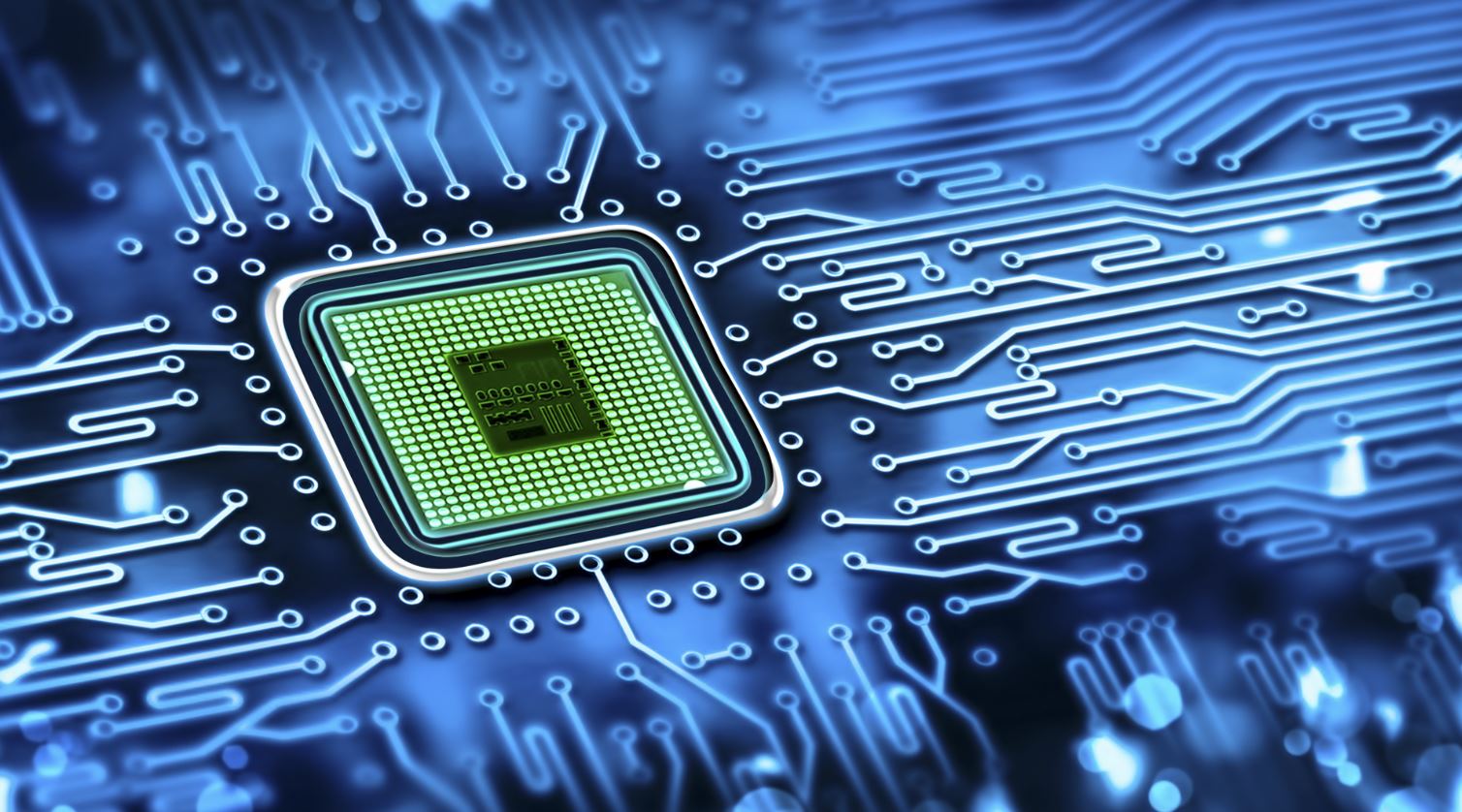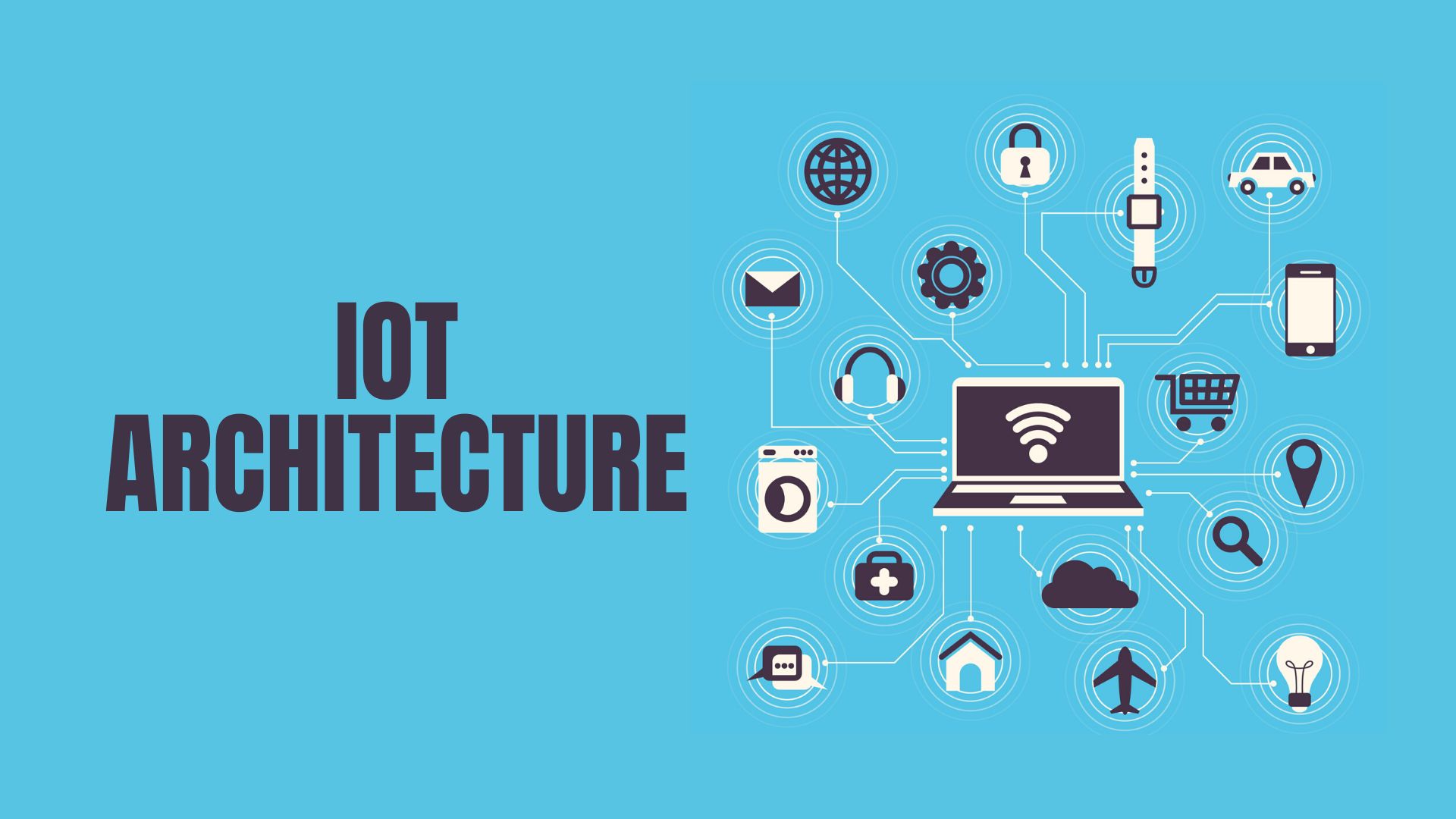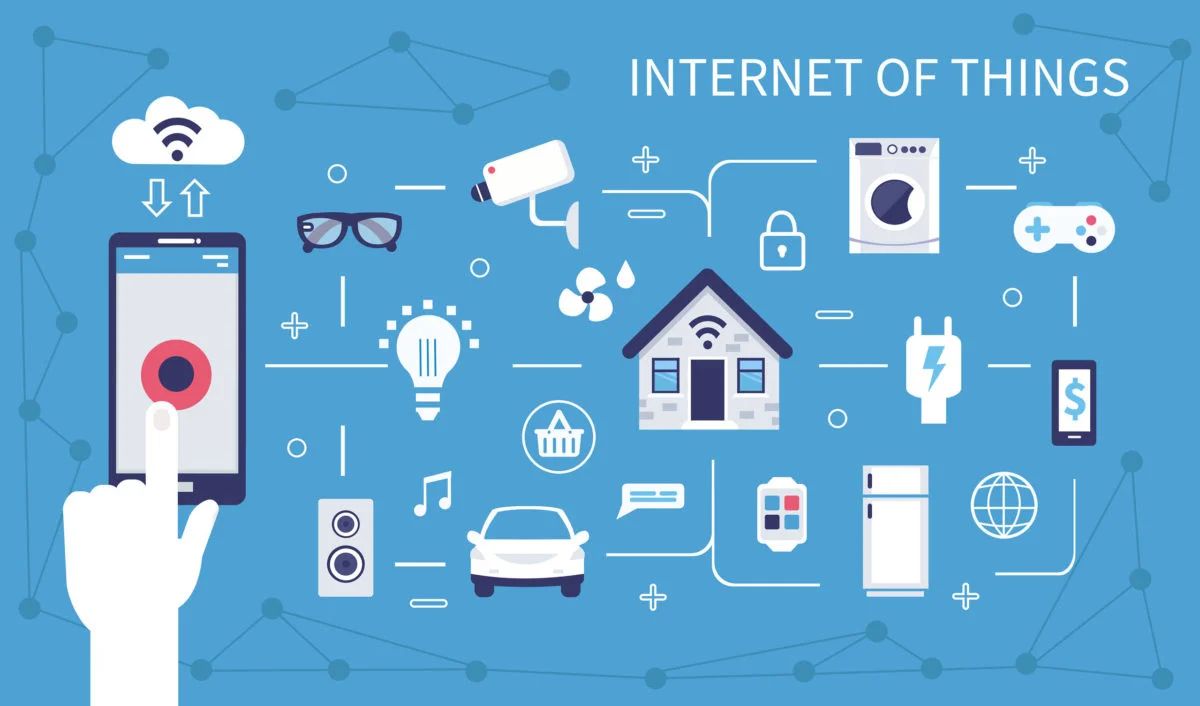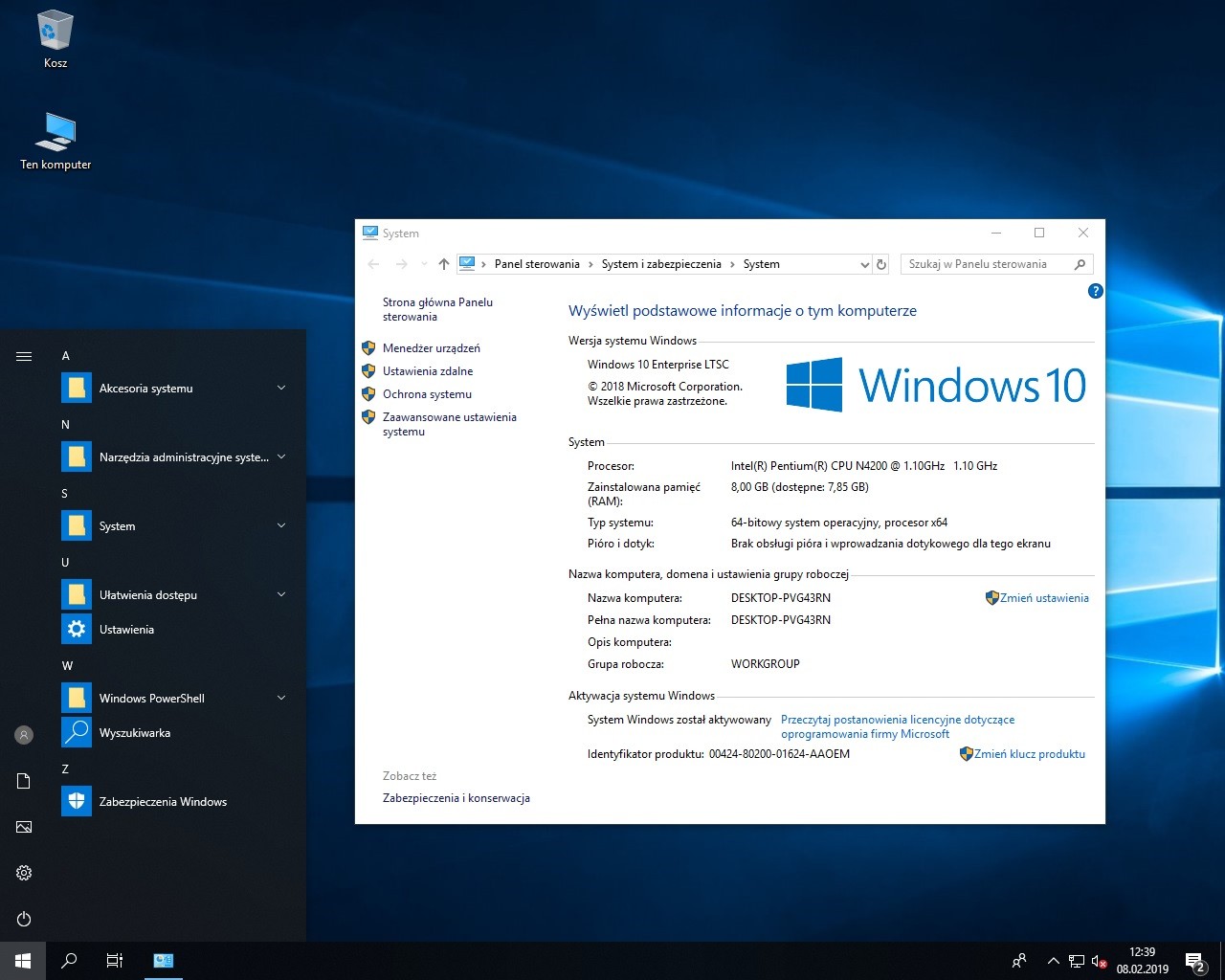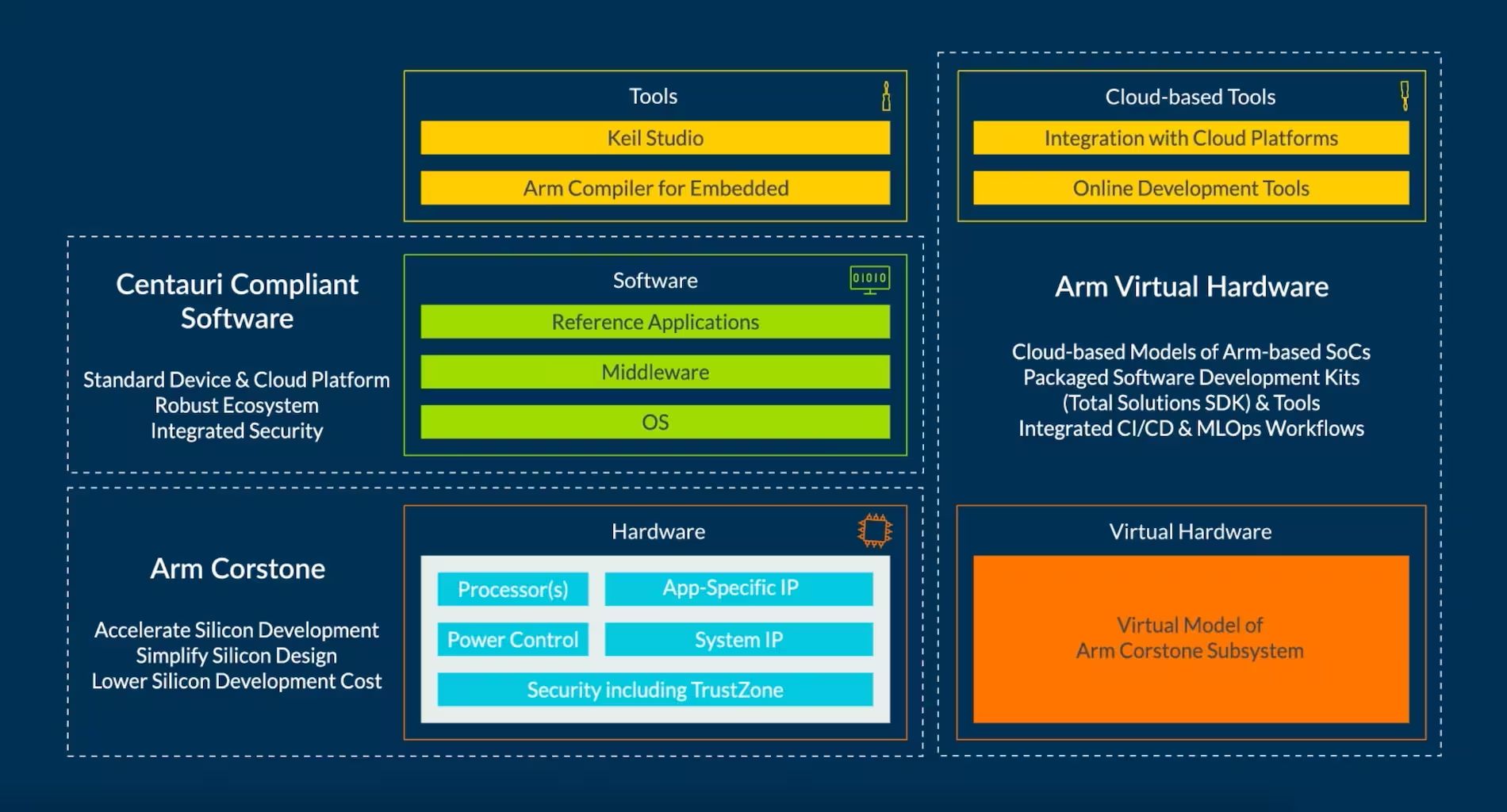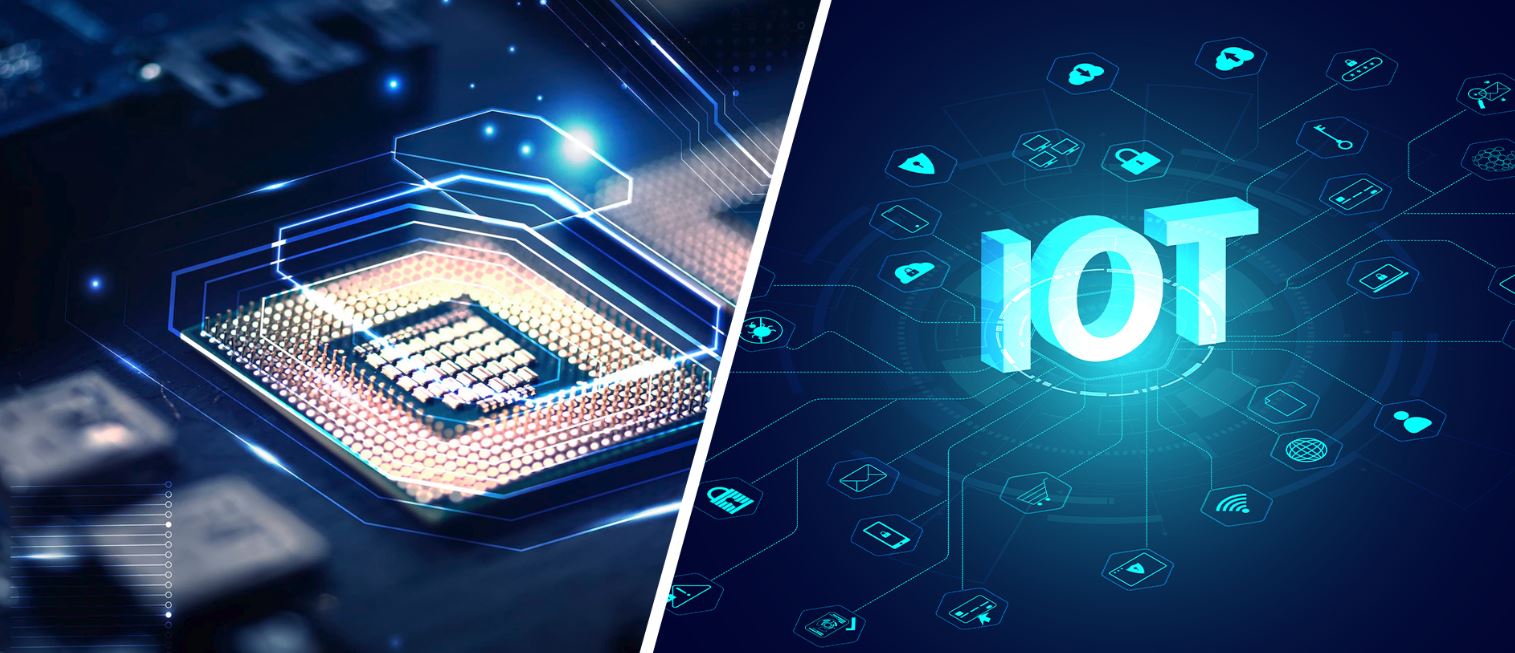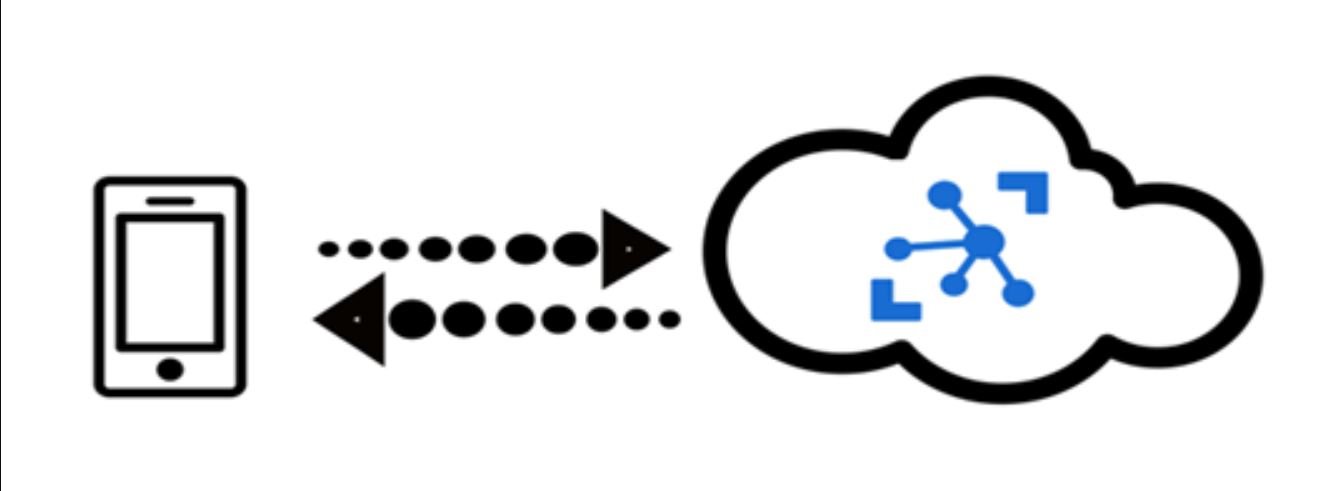Introduction
Welcome to the exciting world of IoT applications! In today’s interconnected world, the Internet of Things (IoT) has revolutionized the way we live and work. IoT applications have the power to enhance efficiency, improve decision-making, and optimize processes across various industries.
But what exactly are IoT applications? Simply put, they are software applications that leverage the power of the internet and connected devices to collect, analyze, and act upon data. These applications can be found in a wide range of domains, from smart homes and healthcare to manufacturing and agriculture.
In this article, we will explore the key aspects of creating IoT applications and provide you with a comprehensive guide to help you get started. Whether you are a developer, an entrepreneur, or a tech enthusiast, this article will equip you with the knowledge and tools to build your own IoT applications.
Before diving into the technical details, it’s important to note that IoT applications require a multidisciplinary approach. They involve hardware selection, software development, data analysis, and integration with external systems. It’s essential to have a solid understanding of these components and how they work together to create a successful IoT application.
Throughout this article, we will walk you through the process step by step, providing practical tips and best practices along the way. By the end, you will have a clear roadmap on how to develop your own IoT application from scratch.
So, without further ado, let’s embark on this exciting journey into the world of IoT applications and unlock the endless possibilities that lie ahead!
Understanding IoT Applications
Before diving into the technical aspects of developing IoT applications, it is essential to have a solid understanding of what IoT applications are and how they function.
IoT applications are software programs that leverage the power of the Internet of Things (IoT) to gather data from various connected devices, analyze that data, and take appropriate actions based on the insights gained. These applications are built upon the foundation of interconnected devices, sensors, and cloud platforms.
The main purpose of IoT applications is to enhance efficiency, improve decision-making processes, automate tasks, and optimize resource utilization across various industries.
To give you a clearer understanding, let’s consider an example of a smart home IoT application. Such an application can connect various devices in a home, such as thermostats, lighting systems, security cameras, and appliances, to a central hub. This hub acts as the brain of the smart home, communicating with the different devices and allowing homeowners to control and monitor them remotely. For instance, with a smart home application, users can adjust the temperature, turn on lights, receive security alerts, and even automate routines based on predefined settings.
IoT applications are not limited to smart homes; they have a wide range of applications in industries such as healthcare, agriculture, manufacturing, transportation, and more. For example, in healthcare, IoT applications can be used to monitor patients remotely, track vital signs, and send alerts in case of emergencies. In agriculture, IoT applications can be employed to monitor soil moisture levels, automate irrigation systems, and optimize crop yield.
Key elements that make IoT applications possible include:
- Connected devices: These are the physical devices that collect and transmit data. They can be sensors, actuators, wearables, or even household appliances.
- Sensors: These devices detect and measure physical quantities such as temperature, humidity, pressure, motion, and more.
- Communication protocols: IoT applications rely on various protocols such as Wi-Fi, Bluetooth, Zigbee, or cellular networks to establish communication between devices.
- Cloud platforms: IoT applications leverage cloud platforms to store, process, and analyze the vast amount of data collected from connected devices.
- Data analysis: This involves extracting meaningful insights from the collected data using techniques like data mining, machine learning, and artificial intelligence.
Having a clear understanding of these elements is crucial for developing robust and efficient IoT applications.
In the next section, we will explore the process of choosing the right hardware for your IoT application, a critical step in ensuring its success.
Choosing the Right Hardware
When developing an IoT application, one of the crucial steps is selecting the right hardware. The hardware components you choose will have a significant impact on the performance, functionality, and scalability of your application.
Here are some key factors to consider when choosing hardware for your IoT application:
- Compatibility: Ensure that the hardware you choose is compatible with your IoT platform and communication protocols. Different platforms and protocols may require specific hardware configurations, so it’s essential to do thorough research and choose components that work seamlessly together.
- Connectivity: Consider the connectivity options required for your application. Depending on the use case, you may need hardware that supports Wi-Fi, Bluetooth, Cellular, or other communication protocols.
- Power consumption: Energy efficiency is crucial in IoT applications, as many IoT devices are battery-powered or have limited power sources. Choose hardware that has low power consumption to prolong battery life and reduce operational costs.
- Sensor capabilities: Evaluate the sensor capabilities needed for your application. Depending on your use case, you may require sensors to measure temperature, humidity, motion, light, etc. Ensure that the chosen hardware has the necessary sensors to collect the data you require.
- Scalability: Consider the scalability of your IoT application. Will you need to add more devices in the future? Ensure that the chosen hardware can accommodate expansion and integrate seamlessly with existing devices.
- Cost: Budget is an important consideration when selecting hardware. Evaluate the cost of different components and weigh it against the features and performance you require. Remember to consider the long-term operational costs as well.
- Reliability and durability: Take into account the reliability and durability of the hardware. IoT devices may be installed in challenging environments or exposed to harsh conditions, so choose components that can withstand such conditions and have a proven track record of reliability.
Additionally, it is crucial to choose reputable hardware suppliers or manufacturers. Ensure that they provide good technical support, documentation, and regular firmware updates.
Overall, choosing the right hardware for your IoT application is a critical step in its success. It is important to think through your specific use case, consider the requirements, and select components that align with your application’s goals and objectives.
Once you have chosen the hardware, the next step is setting up the development environment, which we will explore in the next section.
Setting Up the Development Environment
Once you have chosen the hardware for your IoT application, the next step is to set up the development environment. The development environment consists of the tools and software necessary to write, test, and deploy your IoT application.
Here are the key steps to set up your development environment:
- IDE (Integrated Development Environment): Choose an IDE that supports the programming languages and frameworks you’ll be using for your IoT application. Popular choices include Eclipse, Visual Studio Code, and Arduino IDE.
- SDKs (Software Development Kits): Install the necessary SDKs provided by the hardware manufacturer or the IoT platform you are using. These SDKs will provide the libraries and APIs required for interacting with the hardware and the IoT platform.
- Programming Languages: Depending on your hardware and platform, choose the appropriate programming languages. Common languages used in IoT development include C, C++, Python, JavaScript, and Java.
- Version Control: Set up version control to track changes in your codebase and enable collaboration with other developers. Git is a popular version control system used by many IoT development teams.
- Testing Frameworks: Select testing frameworks that facilitate unit testing and integration testing of your IoT application. These frameworks help ensure the reliability and functionality of your code.
- Simulators and Emulators: Use simulators or emulators to test your IoT application without requiring physical devices. This helps in the early stages of development and allows for faster iteration and debugging.
- Debugging Tools: Set up debugging tools that provide insights into the behavior of your IoT application and help you identify and resolve issues during development. Depending on your platform and IDE, there are various debugging tools available.
- Documentation and Resources: Keep a list of documentation and online resources related to your hardware, programming languages, and IoT platform. This will be valuable for referencing code samples, troubleshooting, and gaining a deeper understanding of the tools and technologies you are using.
Setting up a well-structured and efficient development environment is crucial for the smooth development, testing, and deployment of your IoT application. It enables you to write clean code, collaborate effectively with team members, and ensure the overall quality of your application.
With your development environment in place, you are now ready to dive into the exciting process of collecting data using sensors. This will be our focus in the next section.
Collecting Data using Sensors
Collecting data is a fundamental aspect of IoT applications. Sensors play a crucial role in gathering data from the physical world and providing valuable input for your IoT application. In this section, we will explore the process of collecting data using sensors.
Here are the key steps involved in collecting data using sensors:
- Identify the required data: Determine what data you need to collect for your IoT application. This could include temperature, humidity, pressure, motion, light intensity, or any other relevant parameters depending on your use case.
- Select the appropriate sensors: Choose sensors that can accurately measure the required data. There are various types of sensors available, such as temperature sensors, humidity sensors, accelerometers, gyroscopes, and more. Consider factors such as accuracy, range, sampling rate, and power consumption when selecting sensors.
- Connect sensors to your hardware: Connect the selected sensors to your IoT hardware, following the manufacturer’s documentation and guidelines. This may involve physical wiring or using plug-and-play connectors depending on the type of hardware and sensors you are using.
- Configure and calibrate the sensors: Depending on the sensors, you may need to configure them before they can start collecting data. This involves setting parameters such as sensitivity, sampling rate, and data format. Calibration may also be necessary to ensure the accuracy of the collected data.
- Read data from the sensors: Use the appropriate software libraries or APIs to read data from the sensors. This is usually done by interacting with the sensor’s interface or by making use of protocols such as I2C, SPI, or UART.
- Process and filter the collected data: Once the data is obtained from the sensors, it may be necessary to process and filter it to remove noise and anomalies. This can be done using algorithms or techniques such as moving averages, low-pass filters, or signal processing methods.
- Store and transmit the data: Decide how and where you want to store the collected data. This can be on a local storage device or a cloud platform. Additionally, consider how the data will be transmitted from your IoT hardware to the storage location. This may involve using wireless protocols like Wi-Fi, cellular networks, or MQTT.
Collecting data using sensors is a critical step for your IoT application, as it provides the foundation for generating insights and making informed decisions. Make sure to carefully select and configure the sensors according to your application’s requirements, and validate the collected data for accuracy and reliability.
Next, we will explore the process of connecting your IoT application to the cloud, which opens up a world of possibilities for data storage, analysis, and remote access.
Connecting to the Cloud
One of the key advantages of IoT applications is the ability to connect to the cloud, enabling data storage, analysis, and remote access. In this section, we will explore the process of connecting your IoT application to the cloud.
Here are the key steps involved in connecting to the cloud:
- Select a cloud platform: Choose a cloud platform that suits your needs and offers the features required for your IoT application. Popular choices include Amazon Web Services (AWS), Microsoft Azure, Google Cloud Platform (GCP), and IBM Cloud.
- Set up an IoT hub: Depending on the chosen cloud platform, set up an IoT hub or service that acts as a bridge between your IoT hardware and the cloud. This hub allows you to securely send data from your devices to the cloud and vice versa.
- Configure device registration: Register your IoT hardware as devices in the cloud platform. This involves creating unique identities for your devices and associating them with your IoT hub. Device registration is essential for secure communication and managing device-specific settings.
- Establish a communication protocol: Decide on the communication protocol to be used between your IoT hardware and the cloud. Common protocols include MQTT, HTTP, and AMQP. Implement the necessary protocols in your IoT application to ensure seamless data transfer.
- Implement cloud integration: Develop the necessary code or configuration to enable data transmission from your IoT hardware to the cloud. This can involve using software libraries or SDKs provided by the cloud platform, establishing secure connections, and defining the data format.
- Handle authentication and security: Implement authentication and security mechanisms to protect the communication between your IoT hardware and the cloud. This can include cryptographic protocols, secure key exchanges, and access control policies.
- Manage data storage and retrieval: Decide how data will be stored and retrieved from the cloud. This can involve utilizing cloud storage services, databases, or data lakes. Define the data schema and ensure proper indexing and organization of the collected data for efficient retrieval and analysis.
- Implement cloud-based features: Take advantage of the cloud platform’s features to enhance your IoT application. This can include remote monitoring and control, real-time analytics, rule-based processing, machine learning algorithms, and integration with other cloud services.
Connecting your IoT application to the cloud opens up a world of possibilities for data management, scalability, and advanced analytics. It enables you to securely store and process massive amounts of data, gain valuable insights, and remotely monitor and manage your IoT devices.
Next, we will explore the process of storing and analyzing data from your IoT application, which is crucial for deriving meaningful insights and driving informed decision-making.
Storing and Analyzing Data
Storing and analyzing data is a vital aspect of IoT applications. The data collected from your IoT devices holds valuable insights that can drive informed decision-making and optimize processes. In this section, we will explore the process of storing and analyzing data from your IoT application.
Here are the key steps involved in storing and analyzing data:
- Design a data storage strategy: Determine the data storage requirements of your IoT application. Consider factors such as data volume, retention period, access patterns, and compliance regulations. Choose the appropriate data storage solution, such as a relational database, NoSQL database, or data lake.
- Define data schemas: Establish a structured data schema that captures the attributes and relationships of the collected data. This helps maintain data integrity and enables efficient querying and analysis later on.
- Ingest data into storage: Set up mechanisms to ingest data from your IoT devices into your chosen data storage solution. This can involve leveraging APIs, message queues, or data pipelines to capture and store the data securely and reliably.
- Implement data aggregation and preprocessing: Process and aggregate the collected data to derive meaningful insights. This can involve cleansing the data, removing duplicates or outliers, and aggregating data at different levels of granularity (e.g., hourly, daily, monthly).
- Apply analytics techniques: Utilize various analytics techniques to extract insights from your IoT data. This can include descriptive analytics (e.g., statistical analysis), diagnostic analytics (e.g., correlation analysis), predictive analytics (e.g., machine learning algorithms), and prescriptive analytics (e.g., optimization algorithms).
- Visualize and report: Present the analyzed data in a visually appealing and easy-to-understand format. Use graphs, charts, and dashboards to convey insights effectively to stakeholders. Additionally, generate periodic reports or alerts based on predefined thresholds or patterns.
- Implement scalability and performance optimizations: As your IoT application grows and handles more data, ensure that your data storage and analysis infrastructure can scale accordingly. Optimize performance by implementing indexing strategies, caching mechanisms, and leveraging distributed computing frameworks if needed.
- Continuous monitoring and improvement: Regularly monitor the performance of your data storage and analysis systems. Identify bottlenecks, apply optimizations, and incorporate feedback from stakeholders to continuously improve the effectiveness and efficiency of your data management processes.
Storing and analyzing data from your IoT application forms the foundation for gaining valuable insights and optimizing processes. By implementing robust data storage solutions and leveraging advanced analytical techniques, you can unlock the full potential of your IoT data.
In the next section, we will explore the process of creating a user interface for your IoT application, enabling users to interact with and control IoT devices.
Creating a User Interface
Creating a user interface (UI) is an essential aspect of IoT applications, as it enables users to interact with and control IoT devices. The UI serves as the bridge between the user and the underlying IoT system, providing a user-friendly and intuitive experience. In this section, we will explore the process of creating a user interface for your IoT application.
Here are the key steps involved in creating a user interface:
- Identify user requirements: Understand the needs and expectations of your target users. Consider factors such as their technical proficiency, desired functionality, and preferred user experience. This will help guide the design and development of your UI.
- Sketch and wireframe: Begin by sketching out your UI on paper or using digital tools. This helps visualize the layout, organization, and flow of the interface. Convert your sketches into wireframes, which are basic blueprints that outline the structure and placement of UI elements.
- Design aesthetics: Choose an appropriate design style and adhere to UI/UX design principles. Consider factors such as color schemes, typography, iconography, and use of images. Strive for a visually appealing and cohesive design that aligns with your application’s branding.
- Develop interactive prototypes: Create interactive prototypes using UI prototyping tools. This enables you to test and refine your UI design, allowing for user feedback and usability improvements. Make sure to incorporate key functionality and user flows for a realistic experience.
- Implement UI components: Once your design is finalized, implement the UI components using appropriate front-end frameworks and technologies. This may involve HTML, CSS, JavaScript, or UI libraries such as Bootstrap or Material-UI. Ensure responsiveness, accessibility, and cross-browser compatibility.
- Integrate with backend functionality: Connect your UI with the backend functionality of your IoT application. This includes handling user inputs, sending commands to IoT devices, and receiving real-time updates. Implement robust communication protocols, error handling mechanisms, and authentication for secure interactions.
- Test and iterate: Thoroughly test your UI to ensure seamless functionality and user-friendliness. Conduct usability testing with actual users and gather feedback to identify areas of improvement. Iterate on your design based on user insights, eliminating any pain points and enhancing the overall user experience.
- Optimize performance: Optimize the performance of your UI by minimizing loading times, reducing latency, and optimizing resource utilization. Implement caching mechanisms, lazy loading, and efficient data fetching to provide a smooth and responsive user experience.
- Continuously improve: Keep an eye on user feedback, industry trends, and emerging technologies. Continuously iterate and enhance your UI to meet evolving user expectations and stay ahead of the competition. Incorporate new features, incorporate feedback, and address any bugs or usability issues promptly.
Creating a user interface that caters to the needs and expectations of your users is crucial for the success of your IoT application. By following a user-centric approach, leveraging design principles, and incorporating feedback, you can create an engaging and intuitive UI that enhances the overall user experience.
In the next section, we will explore the process of integrating your IoT application with external systems, enabling interoperability and expanding its capabilities.
Integrating with External Systems
Integrating your IoT application with external systems expands its capabilities and enables interoperability with other technologies and services. This integration opens up a world of possibilities, allowing you to leverage additional functionalities and access data from external sources. In this section, we will explore the process of integrating your IoT application with external systems.
Here are the key steps involved in integrating with external systems:
- Identify integration needs: Determine the specific functionalities or data that you want to integrate with your IoT application. This could include third-party APIs, databases, cloud services, or other IoT platforms.
- Research available integration options: Conduct thorough research to identify the available integration options for the external systems you want to integrate with. Look for well-documented APIs, connectors, or SDKs that facilitate seamless integration and provide the required functionality.
- Set up authentication and access control: Determine the authentication mechanisms required to access the external systems. This may involve obtaining API keys, authorization tokens, or setting up OAuth authentication. Implement appropriate access control measures to secure the integration and protect sensitive data.
- Implement API or data integration: Depending on the integration mechanism, develop the necessary code or configuration to enable communication between your IoT application and the external system. Use the provided APIs, libraries, or protocols to send and receive data, invoke functionalities, or synchronize data between systems.
- Handle error handling and retries: Take into account potential errors or communication failures when integrating with external systems. Implement error handling mechanisms, such as retries, error logging, and appropriate error messages, to ensure smooth and reliable operation even in less-than-ideal scenarios.
- Manage data synchronization: If your integration involves syncing data between your IoT application and external systems, ensure that you have mechanisms in place to handle data conflicts, data consistency, and data integrity. This can include strategies like data deduplication, conflict resolution algorithms, and periodic data synchronization.
- Monitor and maintain: Regularly monitor the integration to ensure its continued functionality and performance. Set up appropriate monitoring tools or alerts to detect any issues or anomalies. Stay updated with any changes or updates from the external system provider and make necessary adjustments to the integration as required.
Integrating your IoT application with external systems unlocks new possibilities, enabling you to leverage third-party services, access data from different sources, and enhance the overall functionality of your application. By following best practices and implementing robust integration techniques, you can seamlessly connect the various components of your IoT ecosystem.
In the next section, we will explore the process of securing your IoT application, safeguarding against potential vulnerabilities and protecting sensitive data.
Securing your IoT Application
Securing your IoT application is of utmost importance to protect against potential vulnerabilities and safeguard sensitive data. IoT devices and networks are often targeted by malicious actors, making security a critical aspect of your application’s development. In this section, we will explore the process of securing your IoT application.
Here are the key steps involved in securing your IoT application:
- Implement secure communication: Ensure that data transmitted between your IoT devices and the cloud platform or external systems is encrypted. Use secure communication protocols like TLS or SSL to prevent unauthorized access and eavesdropping on the data.
- Authenticate and authorize devices: Implement strong device authentication mechanisms to ensure that only authorized devices can access your IoT application. This can involve the use of secure device identities, digital certificates, or biometric authentication.
- Secure user access: Implement secure user authentication and authorization mechanisms for any user interfaces or remote access to your IoT application. Utilize strong passwords, two-factor authentication, or other advanced authentication methods to prevent unauthorized access.
- Apply access control: Utilize access control mechanisms to restrict access to sensitive functionalities or data within your IoT application. Assign specific permissions and roles to users or devices based on their authorized scope of operation.
- Implement data encryption: Encrypt sensitive data stored in the cloud or on IoT devices to protect against unauthorized access. Utilize strong encryption algorithms and ensure encryption keys are properly managed and protected.
- Regularly update and patch: Stay up-to-date with security patches and updates for your IoT hardware, software, and cloud components. Regularly apply the latest updates to address any known vulnerabilities and ensure that your system is protected against potential threats.
- Monitor and detect anomalies: Implement robust monitoring systems to detect any abnormal behavior or security-related events within your IoT application. Utilize intrusion detection systems, anomaly detection algorithms, or real-time monitoring tools to identify and respond to security incidents promptly.
- Secure firmware and software: Ensure that the firmware and software running on your IoT devices are secure and free from vulnerabilities. Regularly update and patch firmware and leverage secure coding practices to minimize the risk of exploitation.
- Educate and train: Promote a culture of security awareness and provide training to your development team and end-users. Educate them about common security threats, best practices, and the importance of following secure coding and operational guidelines.
- Conduct penetration testing: Regularly perform penetration testing and vulnerability assessments to identify any weaknesses in your IoT application’s security. Engage security experts to evaluate your system’s resilience against attacks and recommend necessary enhancements.
By adhering to these security practices, you can significantly reduce the risk of unauthorized accesses, data breaches, and other security threats to your IoT application. Prioritize security throughout every stage of your IoT application’s development and maintenance to ensure a robust and secure system.
In the next section, we will summarize and conclude our guide to creating IoT applications, bringing together the key aspects and steps discussed throughout the article.
Conclusion
Congratulations, you’ve reached the end of our guide to creating IoT applications! Throughout this article, we have explored the key aspects and steps involved in developing successful IoT applications. Let’s recap what we’ve covered:
We began by understanding the concept of IoT applications and their significance in today’s interconnected world. We learned that IoT applications leverage the power of connected devices, sensors, and cloud platforms to collect, analyze, and act upon data.
We then delved into the process of choosing the right hardware for your IoT application. Selecting compatible, reliable, and efficient hardware is crucial for the performance and scalability of your application.
Next, we discussed setting up the development environment, including selecting the right IDE, SDKs, and testing frameworks. A well-structured development environment is essential for efficient coding, collaboration, and testing.
We explored the process of collecting data using sensors, emphasizing the importance of selecting appropriate sensors and accurately measuring the required data. Collecting reliable and relevant data is the foundation for deriving meaningful insights.
Connecting to the cloud was our next topic, where we learned that cloud integration enables secure data storage, analysis, and remote access. It expands the capabilities of your IoT application and provides scalability and advanced analytics.
We then discussed the critical steps of storing and analyzing data. By implementing an effective data storage strategy and applying analytics techniques, we can extract valuable insights and make informed decisions.
The creation of a user interface was the subsequent focus, where we emphasized the importance of designing an intuitive and visually appealing UI. A well-designed UI enhances user experience and allows seamless interaction with IoT devices.
Integrating with external systems came next, opening up opportunities for leveraging additional functionalities and accessing data from diverse sources. Integration facilitates interoperability and expands the capabilities of your IoT application.
Lastly, we explored the crucial aspect of securing your IoT application. By implementing secure communication, authentication, access control, and ongoing monitoring, we can protect IoT devices and sensitive data from potential vulnerabilities.
Remember that developing IoT applications is an ongoing process. Stay updated with new technologies, security best practices, and evolving user requirements. Continuously monitor, test, and improve your application to ensure its efficiency, reliability, and security.
We hope this guide has provided you with valuable insights and practical guidance for creating your own IoT applications. Now, armed with this knowledge, you can embark on your journey to build innovative and impactful IoT solutions.







